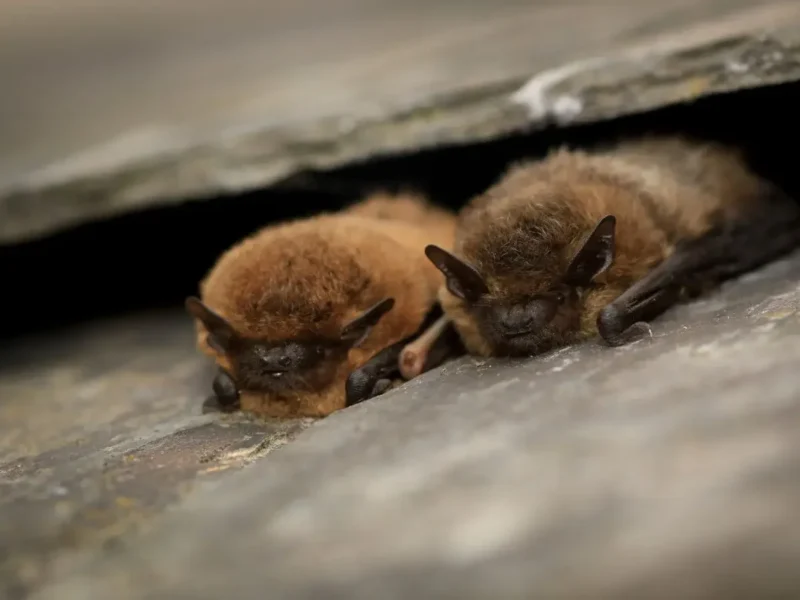The project has been highly commended by the Chartered Institute of Ecology and Environmental Management.
All bats are protected in the UK and it’s illegal to carry out work that disturbs, injures or kills bats, that destroys or disturbs their roosts, or that obstructs their access to sheltering places. This means that our ecologists have had to work closely with Sheffield City Council and have obtained a licence from Natural England to ensure the work they want to carry out causes the least disturbance possible to bats that are roosting in the houses of Sheffield.
As a result, this ambitious project is leading the way with this wildlife protection work – the council have gone beyond what the Natural England guidelines ask for. They’re ensuring the new roofs are 100% bat friendly by:
- carefully surveying housing estates for the presence of bats;
- ensuring the building work is thoughtfully timed to cause the least disruption possible to roosting bats – including avoiding work for some properties which are more suitable for bats during the maternity period of May to September;
- maintaining all of the existing gaps on the underside of roof eaves – a place where bats like to roost ;
- only using bituminous Type 1F roofing felt which is safe for bats, and avoiding other more commonly used roof membranes which can be dangerous for bats;
- installing bespoke bat access tiles on 25% of the houses. These custom roof tiles were designed by Marley and are made out of concrete with a shelter covering the bat access gap and a roughened surface for enhanced grip;
- ecologists will be supervising the stripping of roofs to safely move any bats found.
This is the largest bat mitigation project our Ecology Team have worked on and the measures developed are contributing to updating bat mitigation guidelines and survey methods. The outcomes will also be instrumental in developing best practice for the future of the ecology and roofing sector.
This project was nominated for a best practice large-scale mitigation award by the Chartered Institute of Ecology and Environmental Management in their recent 2022 Awards. The CIEEM highly commended the project and recognised the contribution it has made to ecologically-friendly construction practices.
Our Ecology Team has worked hard to put all the necessary measures (and more) in place for this huge project to ensure any disturbance to the bat population is minimised. We’ve also helped to design new roof renewal construction practices to ensure the updated roofs will be as bat-friendly as possible. The new bat access tile, designed by Marley, is very easy to install and could readily be rolled out as common practice on similar large-scale reroofing projects across the UK.
Dan Best Principal Ecologist - Project Lead
Sheffield City Council have gone above and beyond the Natural England guidelines when it comes to mitigating to protect the bat population. This means that every single property they re-roof will be 100% bat-friendly and accessible to bats in the short and long-term, and bat populations will be protected.
Faye Durkin Head of Ecology
The importance of bats
Bats are an important part of our eco system. All bats in the UK are insectivores and the common pipistrelle, while only weighing the same as a 20p, can eat up to 3000 midges a night! Our bat population is under threat due to habitat loss and if we lost them, we could face problems due to imbalances in the insect population and possible crop failure.









